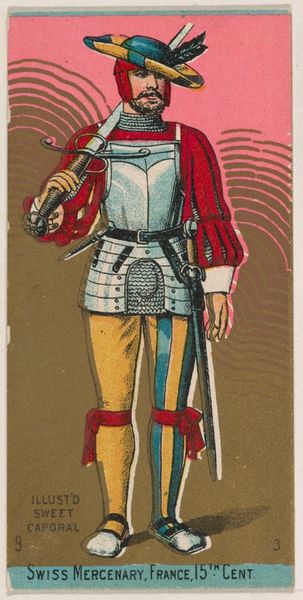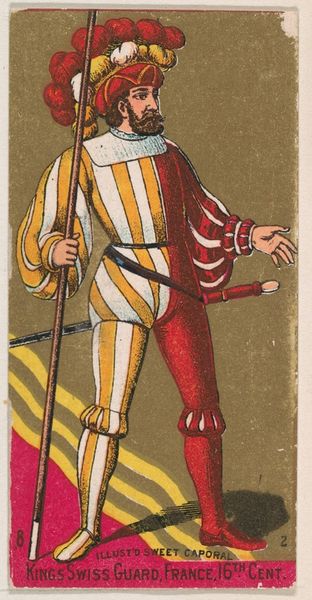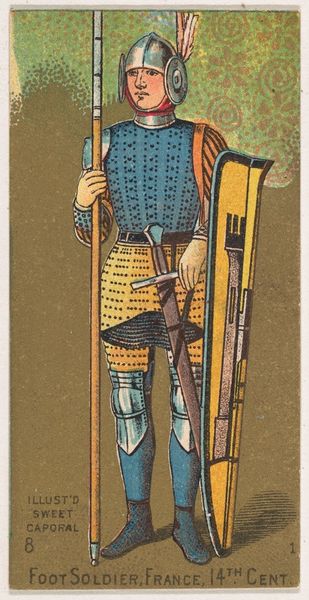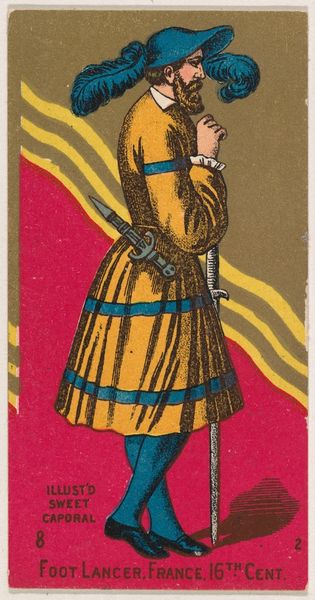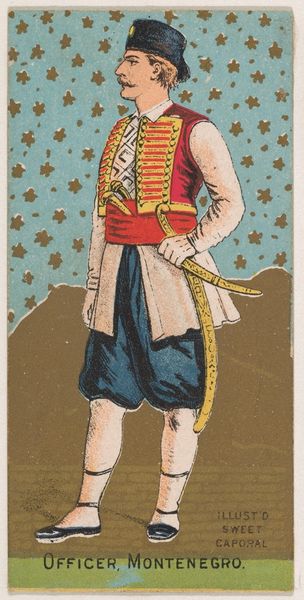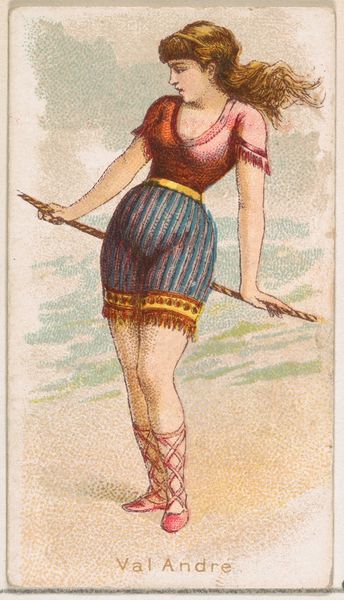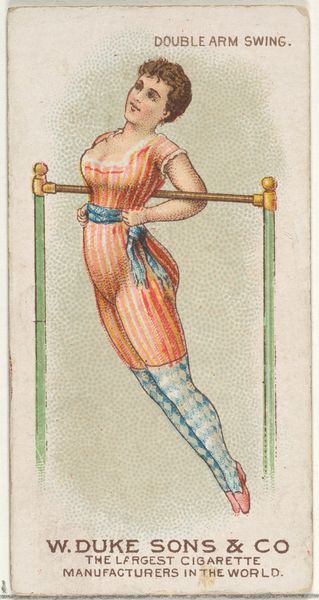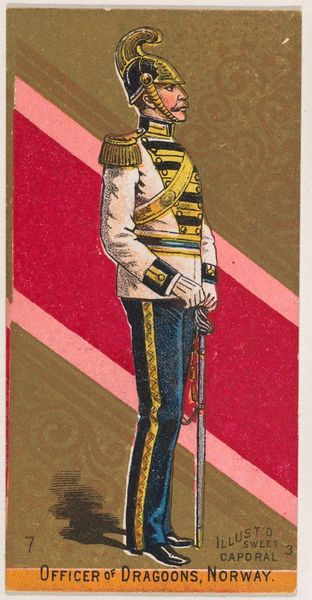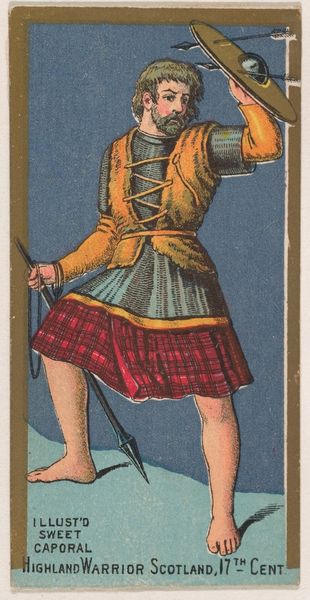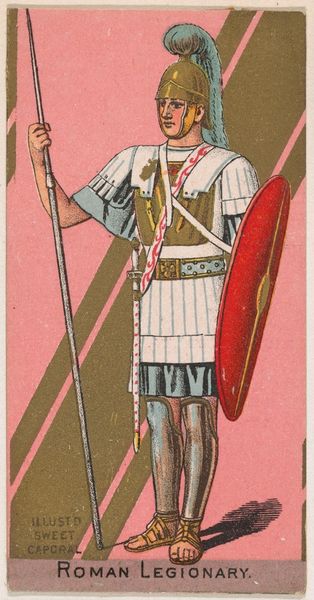
Officer, Cannoneers, France, 16th Century, from the Military Series (N224) issued by Kinney Tobacco Company to promote Sweet Caporal Cigarettes 1888
0:00
0:00
drawing, print
#
portrait
#
drawing
#
weapon
#
narrative-art
# print
#
caricature
#
caricature
#
men
#
history-painting
#
academic-art
Dimensions: Sheet: 2 3/4 × 1 1/2 in. (7 × 3.8 cm)
Copyright: Public Domain
Curator: Here we have "Officer, Cannoneers, France, 16th Century," a chromolithograph trading card created around 1888 by the Kinney Tobacco Company. It was included in packs of Sweet Caporal cigarettes. Editor: Whoa. My first thought is that this guy's uniform is way more fabulous than functional. Pink striped pants? Seriously? But there's something intriguing about the figure that prevents it from becoming cartoonish. Curator: The military series this belongs to offers a glimpse into the late 19th century’s fascination with history and nationalism. Tobacco companies often used imagery reflecting cultural values and aspirations to market their products. These cards were immensely popular collectibles. Editor: So, in other words, sex appeal through power… or supposed power? I'm half-expecting him to start singing an operatic aria, sword held aloft. It has a camp aesthetic. Curator: There is certainly a theatrical quality. While ostensibly educational, depicting military figures throughout history, the artist would inevitably be influenced by artistic and popular tastes, prioritizing visual appeal. The academic style, evident in the figure's detailed armor, blends with the exaggerated proportions characteristic of caricature. Editor: I suppose that the scale and detail invite that kind of close attention. Seeing it reduced to a pocket-sized format transforms what would have been serious historical documentation into almost throwaway pop art. Curator: Precisely! The card’s distribution as a promotional item democratized art in a way, bringing historical imagery to the masses, albeit within the context of commercial advertising. It reflects how art and imagery were used to construct and disseminate ideas about national identity. Editor: It's quite fascinating how this tiny artifact, intended to be briefly enjoyed then tossed, manages to encapsulate so many complex ideas about representation, consumerism, and national pride. Who knew smoking could be so deep? Curator: Indeed. It speaks volumes about the era's complex relationship with art, history, and consumer culture. Editor: Makes you think about what our throwaway images say about us now.
Comments
No comments
Be the first to comment and join the conversation on the ultimate creative platform.
